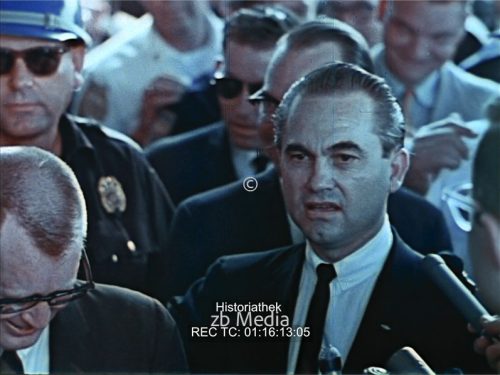Historischer Kontext
Im Film sind der US Offizier Harry Anderson und der Kunsthändler Walter Andreas Hofer zu sehen.
Hofer spielte im Zusammenhang mit Hermann Görings Kunstraub während und nach dem Zweiten Weltkrieg eine wichtige Rolle. Hofer war Görings wichtigster Kunstagent, verantwortlich für den Erwerb und die Verwaltung von Görings umfangreicher und illegaler Kunstsammlung. Er verfügte über beträchtliche Freiheiten und Ressourcen, reiste durch ganz Europa, um wertvolle Kunstwerke zu beschaffen, und konkurrierte dabei oft mit anderen NS-Funktionären. Hofer gelang es, eine große Anzahl vor allem von jüdischen Eigentümern gestohlener Kunstwerke für Göring zu sichern, was ihn zu einer zentralen Figur in den Plünderungsaktionen der Nazis machte (Wikipedia) (Mémoires de Guerre).
Als sich der Krieg dem Ende zuneigte, ordnete Göring an, seine Sammlung von Carinhall nach Berchtesgaden zu bringen, da er befürchtete, dass sie von den vorrückenden Alliierten erobert werden könnte. Die Kunstwerke wurden in Sonderzügen transportiert und in Tunneln und Luftschutzbunkern rund um Berchtesgaden versteckt. Hofer hielt sich in Berchtesgaden auf, um den Schutz der Kunstwerke zu überwachen.
Captain Harry Anderson, ein Offizier der US-Armee, war an der Dokumentation und Sicherung von Görings Sammlung beteiligt, als die Alliierten in Berchtesgaden eintrafen. Anderson erstellte ein Inventar der geraubten Kunstwerke, das später bei der Restitution half.
In der Nachkriegszeit wurde Hofer kurzzeitig von den Alliierten verhaftet und verhört. Obwohl er von einem französischen Militärtribunal in Abwesenheit verurteilt wurde, verbüßte er seine Strafe nie und setzte seine Karriere als Kunsthändler in München bis zu seinem Tod fort.





